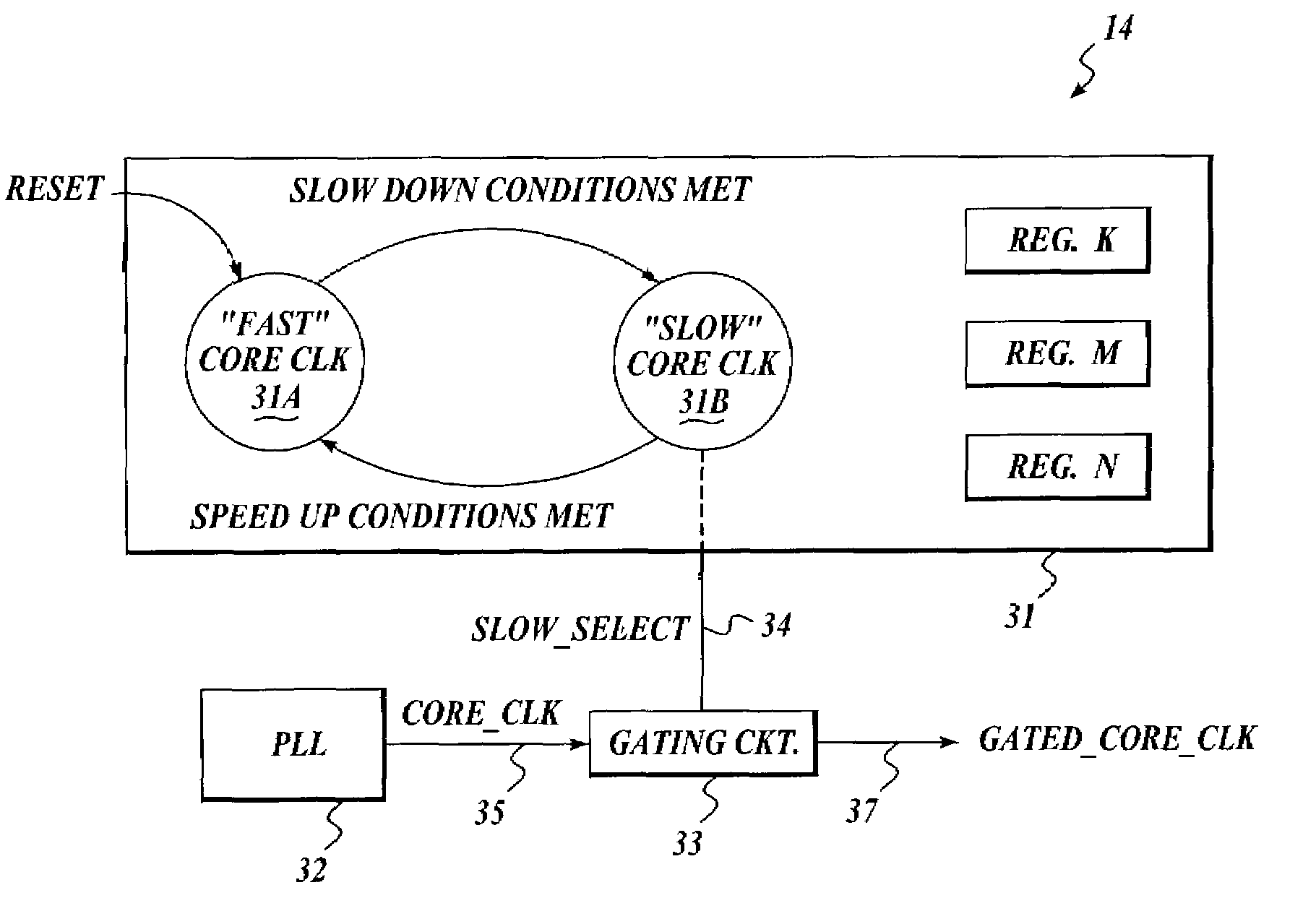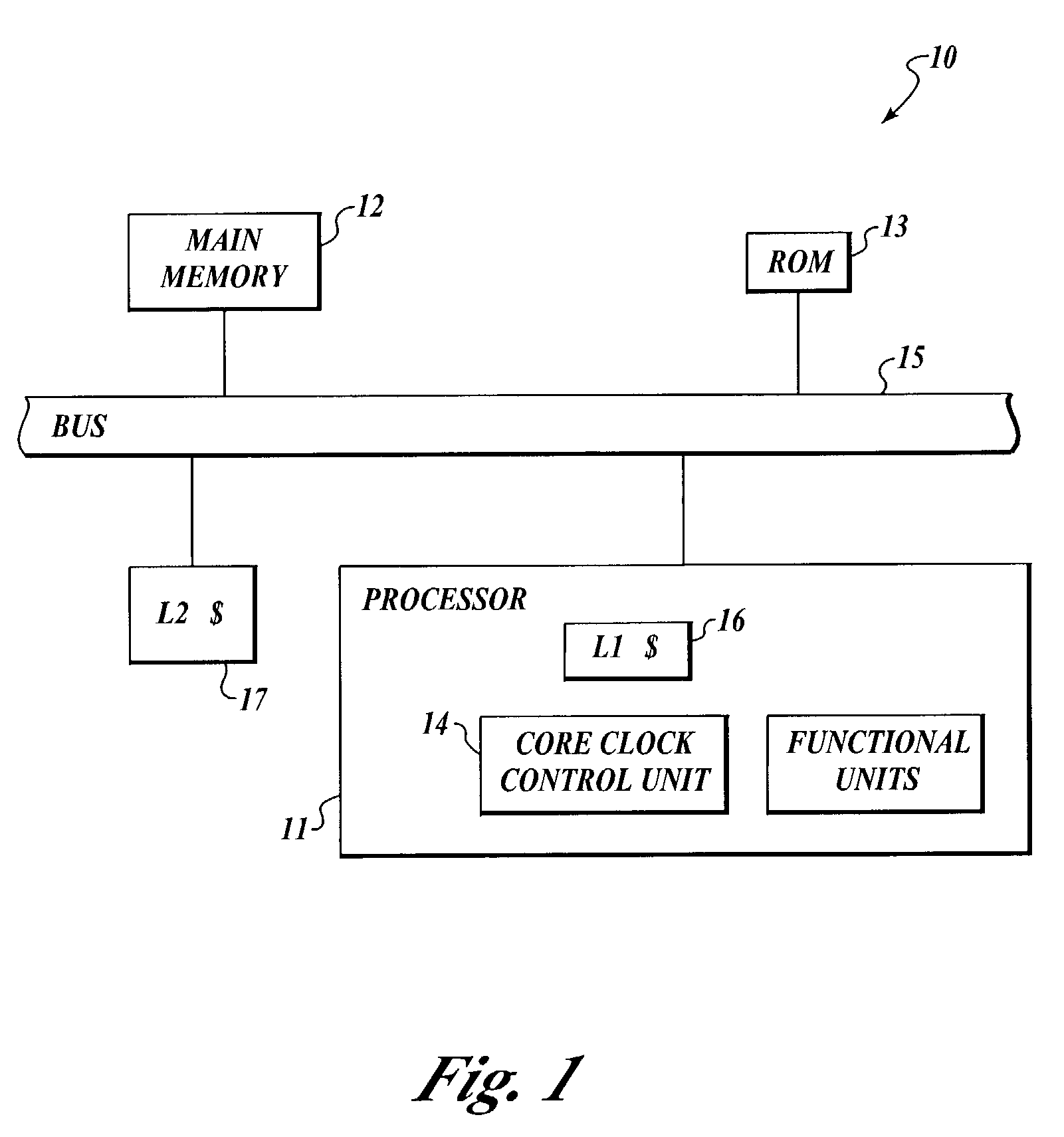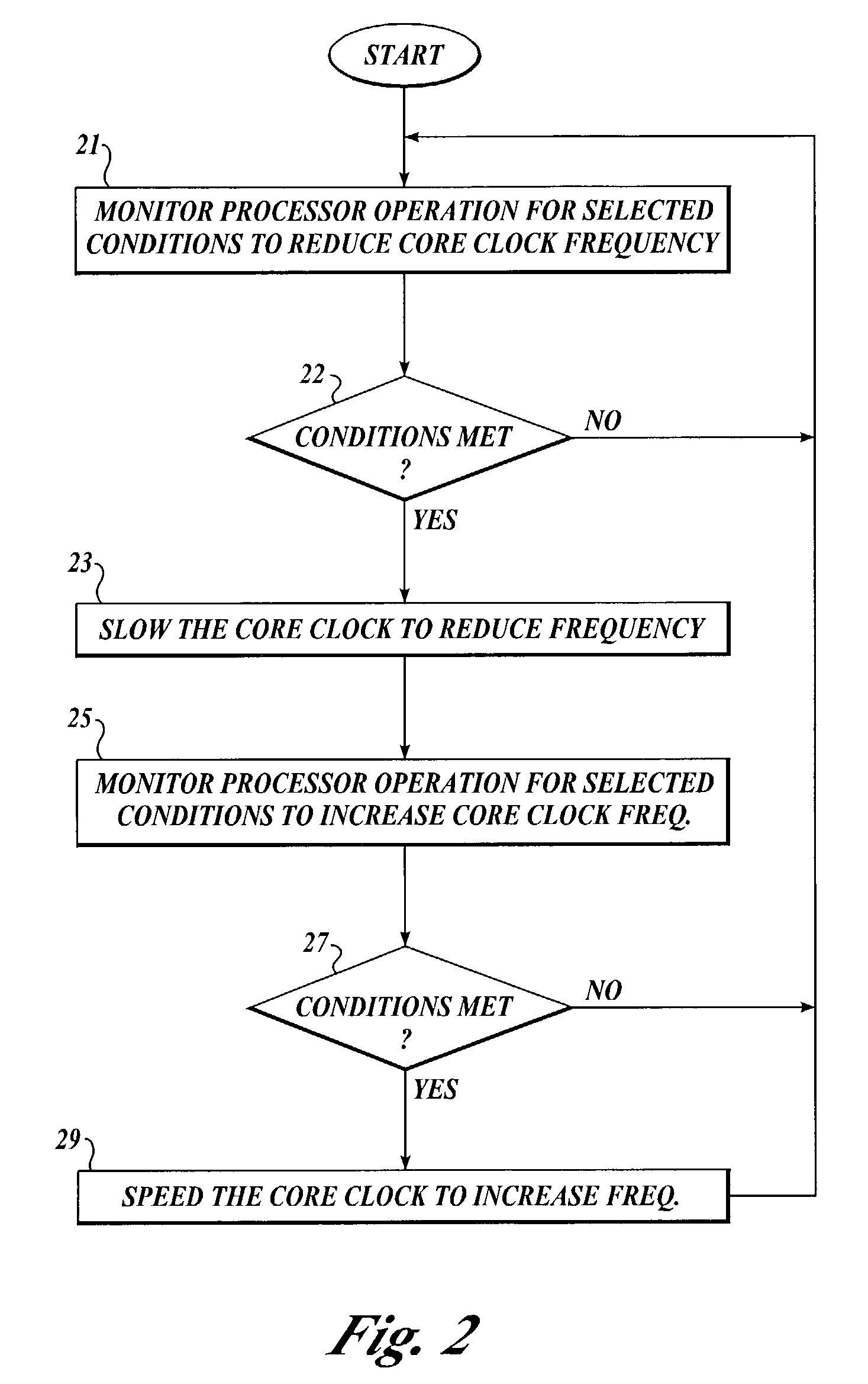Method and apparatus for reducing clock frequency during low workload periods
a clock frequency and low workload technology, applied in the field of processors, can solve the problems of high power dissipation of modern processors, general increase in power dissipation of processors (and other ic devices), and general undesirable high power dissipation
- Summary
- Abstract
- Description
- Claims
- Application Information
AI Technical Summary
Problems solved by technology
Method used
Image
Examples
Embodiment Construction
[0014]Embodiments of the present invention are described below in the context of power management of a processor; however, in light of the present disclosure, those of ordinary skill in the art will understand that the present description is generally applicable to all types of IC devices.
[0015]FIG. 1 illustrates a computer system 10 having a processor 11 with a clock frequency control unit 14, according to one embodiment of the present invention. This embodiment of computer system 10 also includes a main memory 12, a read only memory (ROM) 13, a core clock a bus 15, a first level or internal cache 16 (embedded in processor 11), and a second level or external cache 17. In some embodiments, the second level cache is integrated with the processor and / or there may be other levels of caches either internal or external. Embodiments of clock frequency control unit 14 are described in more detail below in conjunction with FIGS. 3–8.
[0016]Processor 11 is coupled via a bus 15 to main memory ...
PUM
 Login to View More
Login to View More Abstract
Description
Claims
Application Information
 Login to View More
Login to View More - R&D
- Intellectual Property
- Life Sciences
- Materials
- Tech Scout
- Unparalleled Data Quality
- Higher Quality Content
- 60% Fewer Hallucinations
Browse by: Latest US Patents, China's latest patents, Technical Efficacy Thesaurus, Application Domain, Technology Topic, Popular Technical Reports.
© 2025 PatSnap. All rights reserved.Legal|Privacy policy|Modern Slavery Act Transparency Statement|Sitemap|About US| Contact US: help@patsnap.com



